- Home
- Jeffery Deaver
The Bone Collector Page 7
The Bone Collector Read online
Page 7
Sellitto made a call and looked up a few minutes later. "I've got you dispatchers, Lincoln. Four of them. Where do we get a list of manufacturers?"
"Get a patrolman down to Forty-second Street," Rhyme replied. "Public Library. They have corporate directories there. Until we get one, have the dispatchers start working through the Business-to-Business Yellow Pages."
Sellitto repeated this into the phone.
Rhyme glanced at the clock. It was one-thirty.
"Now, the asbestos."
For an instant, the word glowed in his mind. He felt a jolt--in places where no jolts could be felt. What was familiar about asbestos? Something he'd read or heard about--recently, it seemed, though Lincoln Rhyme no longer trusted his sense of time. When you lie on your back frozen in place month after month after month, time slows to near-death. He might be thinking of something he'd read two years ago.
"What do we know about asbestos?" he mused. No one answered but that didn't matter; he answered himself. As he preferred to do anyway. Asbestos was a complex molecule, silicate polymer. It doesn't burn because, like glass, it's already oxidized.
When he'd run crime scenes of old murders--working with forensic anthropologists and odontologists--Rhyme often found himself in asbestos-insulated buildings. He remembered the peculiar taste of the face masks they'd had to wear during the excavation. In fact, he now recalled, it'd been during an asbestos-removal cleanup at the City Hall subway stop three and a half years ago that crews found the body of one of the policemen murdered by Dan Shepherd dumped in a generator room. As Rhyme had bent down over it slowly to lift a fiber from the officer's light-blue blouse, he'd heard the crack and groan of the oak beam. The mask had probably saved him from choking to death on the dust and dirt that caved in around him.
"Maybe he's got her at a cleanup site," Sellitto said.
"Could be," Rhyme agreed.
Sellitto ordered his young assistant, "Call EPA and city Environmental. Find out if there're any sites where cleanup's going on right now."
The detective made the call.
"Bo," Rhyme asked Haumann, "you have teams to deploy?"
"Ready to roll," the ESU commander confirmed. "Though I gotta tell you, we've got over half the force tied up with this UN thing. They're on loan to the Secret Service and UN security."
"Got some EPA info here." Banks gestured to Haumann and they retired to a corner of the room. They moved aside several stacks of books. As Haumann unfurled one of ESU's tactical maps of New York something clattered to the floor.
Banks jumped. "Jesus."
From the angle where he lay, Rhyme couldn't see what had fallen. Haumann hesitated then bent down and retrieved the bleached piece of spinal column and replaced it on the table.
Rhyme felt several pairs of eyes on him but he said nothing about the bone. Haumann leaned over the map, as Banks, on the phone, fed him information about asbestos-cleanup sites. The commander marked them in grease pencil. There appeared to be a lot of them, scattered all over the five boroughs of the city. It was discouraging.
"We have to narrow it down more. Let's see, the sand," Rhyme said to Cooper. "'Scope it. Tell me what you think."
Sellitto handed the evidence envelope to the tech, who poured the contents out onto an enamel examination tray. The glistening powder left a small cloud of dust. There was also a stone, worn smooth, which slid into the center of the pile.
Lincoln Rhyme's throat caught. Not at what he saw--he didn't yet know what he was looking at--but at the flawed nerve impulse that shot from his brain and died halfway to his useless right arm, urging it to grab a pencil and to probe. The first time in a year or so he'd felt that urge. It nearly brought tears into his eyes and his only solace was the memory of the tiny bottle of Seconal and the plastic bag that Dr. Berger carried with him--images that hovered like a saving angel over the room.
He cleared his throat. "Print it!"
"What?" Cooper asked.
"The stone."
Sellitto looked at him inquiringly.
"The rock doesn't belong there," Rhyme said. "Apples and oranges. I want to know why. Print it."
Using porcelain-tipped forceps, Cooper picked up the stone and examined it. He slipped on goggles and hit the rock with a beam from a PoliLight--a power pack the size of a car battery with a light wand attached.
"Nothing," Cooper said.
"VMD?"
Vacuum metal deposition is the Cadillac of techniques for raising latent prints on nonporous surfaces. It evaporates gold or zinc in a vacuum chamber containing the object to be tested; the metal coats the latent print, making the whorls and peaks very visible.
But Cooper didn't have a VMD with him.
"What do you have?" asked Rhyme, not pleased.
"Sudan black, stabilized physical developer, iodine, amido black, DFO and gentian violet, Magna-Brush."
He'd also brought ninhydrin for raising prints on porous surfaces and a Super Glue frame for smooth surfaces. Rhyme recalled the stunning news that had swept the forensic community some years ago: A technician working in a U.S. Army forensic lab in Japan had used Super Glue to fix a broken camera and found to his amazement that the fumes from the adhesive raised latent fingerprints better than most chemicals made for that purpose.
This was the method Cooper now used. With forceps he set the rock in a small glass box and put a dab of glue on the hot plate inside. A few minutes later he lifted the rock out.
"We've got something," he said. He dusted it with long-wavelength UV powder and hit it with the beam from the PoliLight wand. A print was clearly visible. Dead center. Cooper photographed it with Polaroid CU-5, a 1:1 camera. He showed the picture to Rhyme.
"Hold it closer." Rhyme squinted as he examined it. "Yes! He rolled it."
Rolling prints--rocking a finger onto a surface--produced an impression different from one made by picking up an object. It was a subtle difference--in the width of the friction ridges at various points on the pattern--but one that Rhyme now recognized clearly.
"And look, what's that?" he mused. "That line." There was a faint crescent mark above the print itself.
"It looks almost like--"
"Yep," Rhyme said, "her fingernail. You wouldn't normally get that. But I'll bet he tipped the stone just to make sure it got picked up. It left an oil impression. Like a friction ridge."
"Why would he do that?" Sachs asked.
Once more miffed that nobody seemed to be picking up these points as fast as he was, Rhyme explained tersely, "He's telling us two things. First, he's making sure we know the victim's a woman. In case we didn't make the connection between her and the body this morning."
"Why do that?" Banks asked.
"To up the ante," Rhyme said. "Make us sweat more. He's let us know there's a woman at risk. He's valuated the victims--just like we all do--even though we claim we don't." Rhyme happened to glance at Sachs's hands. He was surprised to see that, for such a beautiful woman, her fingers were a mess. Four ended in fleshy Band-Aids and several others were chewed to the quick. The cuticle of one was caked with brown blood. He noticed too the red inflammation of the skin beneath her eyebrows, from plucking them, he assumed. And a scratch mark beside her ear. All self-destructive habits. There're a million ways to do yourself in besides pills and Armagnac.
Rhyme announced, "The other thing he's telling us I already warned you about. He knows evidence. He's saying, Don't bother with regular forensic PE. I won't be leaving any. That's what he thinks of course. But we'll find something. You bet we will." Suddenly Rhyme frowned. "The map! We need the map. Thom!"
The aide blurted, "What map?"
"You know what map I mean."
Thom sighed. "Not a clue, Lincoln."
Glancing out the window and speaking half to himself, Rhyme mused, "The railroad underpass, the bootleg tunnels and access doors, the asbestos--those're all old. He likes historical New York. I want the Randel map."
"Which is where?"
"The res
earch files for my book. Where else?"
Thom dug through folders and pulled out a photocopy of a long, horizontal map of Manhattan. "This?"
"That, yes!"
It was the Randel Survey, drawn in 1811 for the commissioners of the city to plan out the grid of streets in Manhattan. The map had been printed horizontally, with Battery Park, south, to the left and Harlem, north, to the right. Laid out this way, the island resembled the body of a dog leaping, its narrow head lifted for an attack.
"Pin it up there. Good."
As the aide did, Rhyme blurted, "Thom, we're going to deputize you. Give him a shiny badge or something, Lon."
"Lincoln," he muttered.
"We need you. Come on. Haven't you always wanted to be Sam Spade or Kojak?"
"Only Judy Garland," the aide replied.
"Jessica Fletcher then! You'll be writing the profile. Come on now, get out that Mont Blanc you're always letting stick vainly out of your shirt pocket."
The young man rolled his eyes as he lifted his Parker pen and took a dusty yellow pad from a stack under one of the tables.
"No, I've got a better idea," Rhyme announced. "Put up one of those posters. Those art posters. Tape it up backwards and write on the back in marker. Write big now. So I can see it."
Thom selected a Monet lily pads and mounted it to the wall.
"On the top," the criminalist ordered, "write 'Unsub 823.' Then four columns. 'Appearance. Residence. Vehicle. Other.' Beautiful. Now, let's start. What do we know about him?"
Sellitto said, "Vehicle . . . He's got a Yellow Cab."
"Right. And under 'Other' add that he knows CS--crime scene--procedures."
"Which," Sellitto added, "maybe means he's had his turn in the barrel."
"How's that?" Thom asked.
"He might have a record," the detective explained.
Banks said, "Should we add that he's armed with a .32 Colt?"
"Fuck yes," his boss confirmed.
Rhyme contributed, "And he knows FRs. . . ."
"What?" Thom asked.
"Friction ridges--fingerprints. That's what they are, you know, ridges on our hands and feet to give us traction. And put down that he's probably working out of a safe house. Good job, Thom. Look at him. He's a born law enforcer."
Thom glowered and stepped away from the wall, brushing at his shirt, which had picked up a stringy cobweb from the wall.
"There we go, folks," Sellitto said. "Our first look at Mr. 823."
Rhyme turned to Mel Cooper. "Now, the sand. What can we tell about it?"
Cooper lifted the goggles onto his pale forehead. He poured a sample onto a slide and slipped it under the polarized-light 'scope. He adjusted dials.
"Hmm. This is curious. No birefringence."
Polarizing microscopes show birefringence--the double refraction of crystals and fibers and some other materials. Seashore sand birefringes dramatically.
"So it isn't sand," Rhyme muttered. "It's something ground up. . . . Can you individuate it?"
Individuation . . . The goal of the criminalist. Most physical evidence can be identified. But even if you know what it is there are usually hundreds or thousands of sources it might have come from. Individuated evidence is something that could have come from only one source or a very limited number of sources. A fingerprint, a DNA profile, a paint chip that fits into a missing spot on the perp's car like a jigsaw-puzzle piece.
"Maybe," the tech responded, "if I can figure out what it is."
"Ground glass?" Rhyme suggested.
Glass is essentially melted sand but the glassmaking process alters the crystalline structure. You don't get birefringence with ground glass. Cooper examined the sample closely.
"No, I don't think it's glass. I don't know what it is. I wish I had an EDX here."
A popular crime lab tool was a scanning electron microscope married to an energy-dispersive X-ray unit; it determined what elements were in trace samples found at crime scenes.
"Get him one," Rhyme ordered Sellitto, then looked around the room. "We need more equipment. I want a vacuum metal fingerprint unit too. And a GC-MS." A gas chromatograph broke down substances into their component elements, and mass photospectrometry used light to identify each one of them. These instruments let criminalists test an unknown sample as small as one millionth of a gram and compare it against a database of a hundred thousand known substances, cataloged by identity and name brand.
Sellitto phoned the wish list in to the CSU lab.
"But we can't wait for the fancy toys, Mel. You'll have to do it the old-fashioned way. Tell me more about our phony sand."
"It's mixed with a little dirt. There's loam, flecks of quartz, feldspar and mica. But minimal leaf and decomposed-plant fragments. Flecks here of what could be bentonite."
"Bentonite." Rhyme was pleased. "That's a volcanic ash that builders use in slurry when they're digging foundations in watery areas of the city where the bedrock's deep. It prevents cave-ins. So we're looking for a developed area that's on or near the water, probably south of Thirty-fourth Street. North of that the bedrock's much closer to the surface and they don't need slurry."
Cooper moved the slide. "If I had to guess, I'd say this is mostly calcium. Wait, something fibrous here."
The knob turned and Rhyme would've paid anything to be looking through that eyepiece. Flashed back to all the evenings he'd spent with his face pressed against the gray sponge rubber, watching fibers or flecks of humus or blood cells or metal shavings swim into and out of focus.
"Here's something else. A larger granule. Three layers. One similar to horn, then two layers of calcium. Slightly different colors. The other one's translucent."
"Three layers?" Rhyme spat out angrily. "Hell, it's a seashell!" He felt furious with himself. He should have thought of that.
"Yep, that's it." Cooper was nodding. "Oyster, I think."
The oyster beds around the city were mostly off the coasts of Long Island and New Jersey. Rhyme had hoped that the unsub would limit the geographic area of the search to Manhattan--where the victim that morning was found. He muttered, "If he's opening up the whole metro area the search'll be hopeless."
Cooper said, "I'm looking at something else. I think it's lime. But very old. Granular."
"Concrete maybe?" Rhyme suggested.
"Possibly. Yes.
"I don't get the shells then," Cooper added reflectively. "Around New York the oyster beds're full of vegetation and mud. This is mixed with concrete and there's virtually no vegetable matter at all."
Rhyme barked suddenly. "Edges! What are the edges of the shell like, Mel?"
The tech gazed into the eyepiece. "Fractured, not worn. This's been pulverized by dry pressure. Not eroded by water."
Rhyme's eyes slipped over the Randel map, scanning right and left. Focusing on the leaping dog's rump.
"Got it!" he cried.
In 1913 F. W. Woolworth built the sixty-story structure that still bears his name, terra-cotta-clad, covered with gargoyles and Gothic sculpture. For sixteen years it was the world's tallest building. Because the bedrock in that part of Manhattan was more than a hundred feet below Broadway, workmen had to dig deep shafts to anchor the building. It wasn't long after the groundbreaking that workmen discovered the remains of Manhattan industrialist Talbott Soames, who'd been kidnapped in 1906. The man's body was found buried in a thick bed of what looked like white sand but was really ground oyster shells, a fact the tabloids had a hey-day with, noting the obese tycoon's obsession with rich food. The shells were so common along the lower eastern tip of Manhattan they'd been used for landfill. They were what had given Pearl Street its name.
"She's downtown somewhere," Rhyme announced. "Probably the east side. And maybe near Pearl. She'll be underground, about five to fifteen feet down. Maybe a construction site, maybe a basement. An old building or tunnel."
"Cross-check the EPA diagram, Jerry," Sellitto instructed. "Where they're doing asbestos cleanup."
"Along Pearl? Nothing." The young officer held up the map he and Haumann were working from. "There're three-dozen cleanup sites--in Midtown, Harlem and the Bronx. But nothing downtown."
"Asbestos . . . asbestos . . ." Rhyme mused again. What was so familiar about it?
It was 2:05 p.m.
"Bo, we've got to move. Get your people down there and start a search. All the buildings along Pearl Street. Water Street too."
"Man," the cop sighed, "that's beaucoup buildings." He started for the door.
Rhyme said to Sellitto, "Lon, you better go too. This's going to be a photo finish. They'll need all the searchers they can get. Amelia, I want you down there too."
"Look, I've been thinking--"
"Officer," Sellitto snapped, "you got your orders."
A faint glower crossed her beautiful face.
Rhyme said to Cooper, "Mel, you drive over here in a bus?"
"An RRV," he answered.
The city's big crime scene buses were large vans--filled with instruments and evidence-collection supplies, better equipped than the entire labs of many small towns. But when Rhyme was running IRD he'd ordered smaller crime scene vehicles--station wagons basically--containing the essential collection-and-analysis equipment. The Rapid Response Vehicles looked placid but Rhyme had bullied Transportation into getting them fitted with turbocharged Police Interceptor engines. They often beat Patrol's squad cars to the scene; on more than one occasion the first officer was a seasoned crime scene tech. Which is every prosecutor's dream.
"Give Amelia the keys."
Cooper handed them to Sachs, who stared briefly at Rhyme then wheeled and hurried down the stairs. Even her footsteps sounded angry.
"All right, Lon. What's on your mind?"
Sellitto glanced at the empty hallway and walked up close to Rhyme. "You really want P.D. for this?"
"P.D.?"
"I mean her. Sachs. P.D.'s a nickname."
"For what?"
"Don't say it around her. Ticks her off. Her dad was a beat cop for forty years. So they call her the Portable's Daughter."
"You don't think I should've picked her?"
"Naw, I don't. Why d'you want her?"
"Because she climbed down a thirty-foot embankment so she wouldn't contaminate the scene. She closed a major avenue and an Amtrak line. That's initiative."
"Come on, Linc. I know a dozen CS cops'd do something like that."
"Well, she's the one I wanted." And Rhyme gave Sellitto a grave look, reminding him, subtly but without debate, what the terms of this bargain had been.

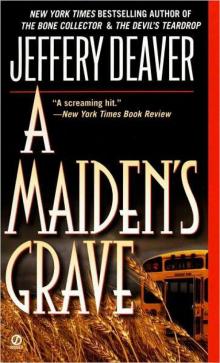 A Maiden's Grave
A Maiden's Grave Trouble in Mind: The Collected Stories - 3
Trouble in Mind: The Collected Stories - 3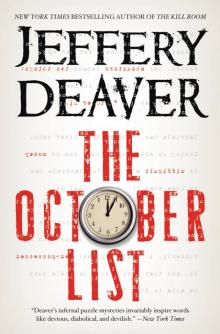 The October List
The October List The Deliveryman
The Deliveryman Garden of Beasts
Garden of Beasts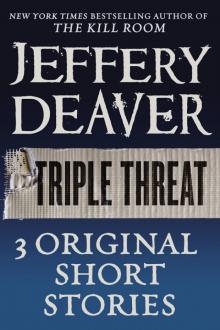 Triple Threat
Triple Threat The Broken Window
The Broken Window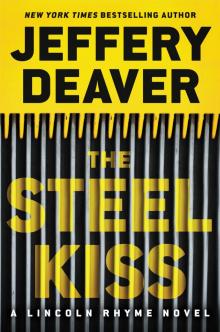 The Steel Kiss
The Steel Kiss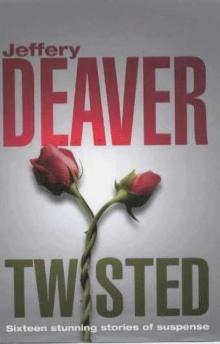 Twisted: The Collected Stories - 1
Twisted: The Collected Stories - 1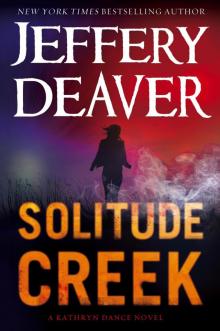 Solitude Creek
Solitude Creek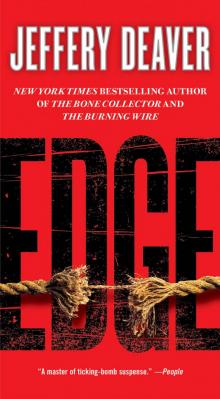 Edge
Edge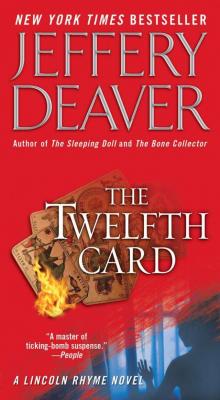 The Twelfth Card
The Twelfth Card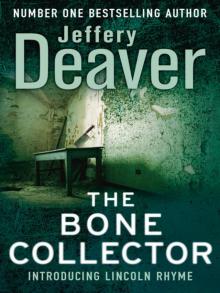 The Bone Collector
The Bone Collector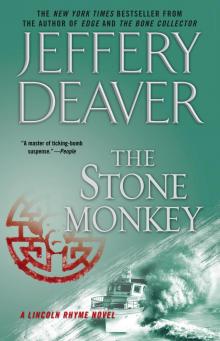 The Stone Monkey
The Stone Monkey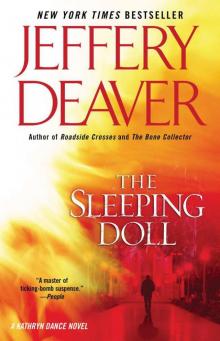 The Sleeping Doll
The Sleeping Doll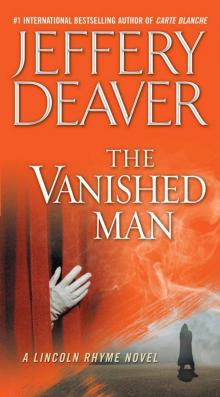 The Vanished Man
The Vanished Man The Kill Room
The Kill Room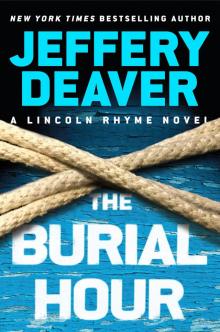 The Burial Hour
The Burial Hour An Acceptable Sacrifice
An Acceptable Sacrifice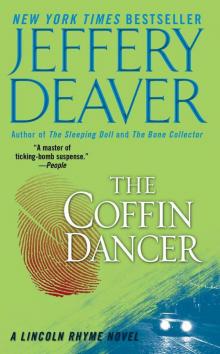 The Coffin Dancer
The Coffin Dancer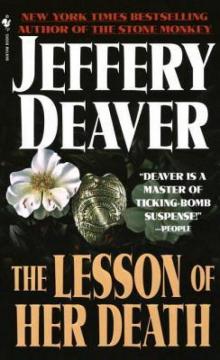 The Lesson of Her Death
The Lesson of Her Death The Empty Chair
The Empty Chair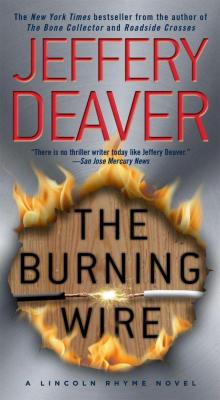 The Burning Wire
The Burning Wire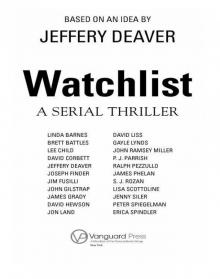 Watchlist
Watchlist Captivated
Captivated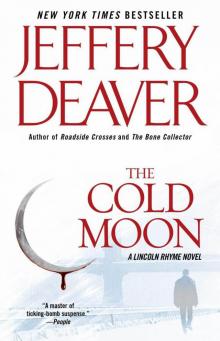 The Cold Moon
The Cold Moon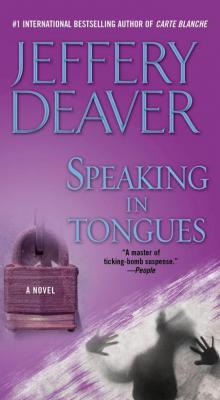 Speaking in Tongues
Speaking in Tongues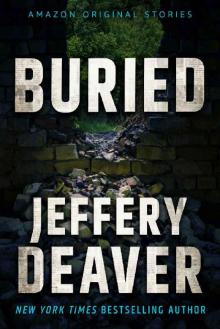 Buried (Hush collection)
Buried (Hush collection)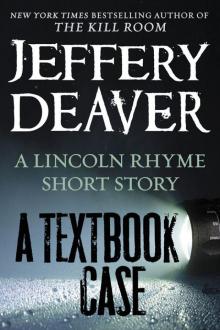 A Textbook Case
A Textbook Case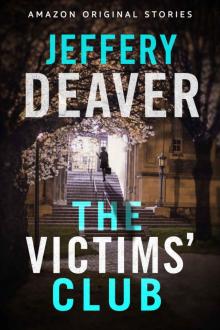 The Victims' Club
The Victims' Club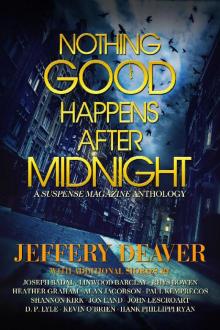 Nothing Good Happens After Midnight: A Suspense Magazine Anthology
Nothing Good Happens After Midnight: A Suspense Magazine Anthology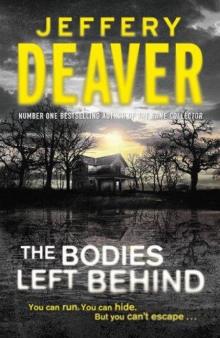 The Bodies Left Behind
The Bodies Left Behind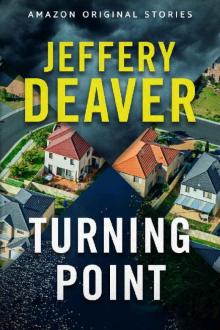 Turning Point
Turning Point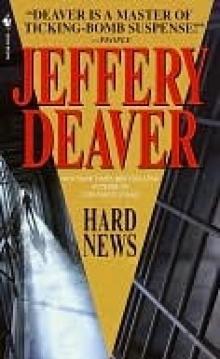 Hard News
Hard News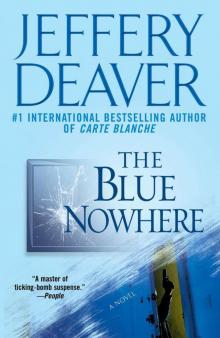 The Blue Nowhere
The Blue Nowhere The Second Hostage
The Second Hostage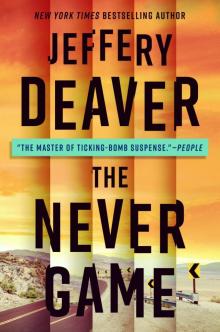 The Never Game
The Never Game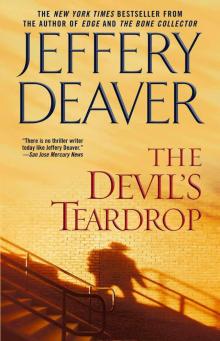 The Devil's Teardrop
The Devil's Teardrop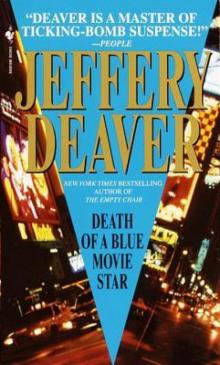 Death of a Blue Movie Star
Death of a Blue Movie Star The Skin Collector
The Skin Collector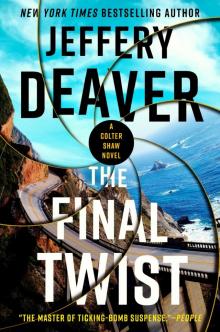 The Final Twist
The Final Twist Surprise Ending
Surprise Ending Twisted: The Collected Stories
Twisted: The Collected Stories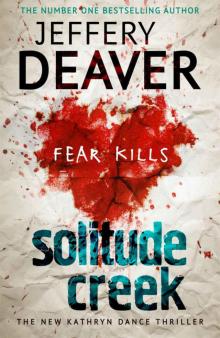 Solitude Creek: Kathryn Dance Book 4
Solitude Creek: Kathryn Dance Book 4 Twisted: The Collected Short Stories of Jeffery Deaver
Twisted: The Collected Short Stories of Jeffery Deaver Rhymes With Prey
Rhymes With Prey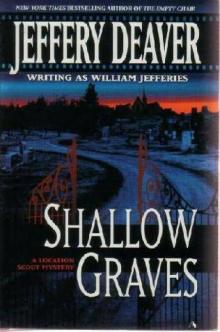 Shallow Graves
Shallow Graves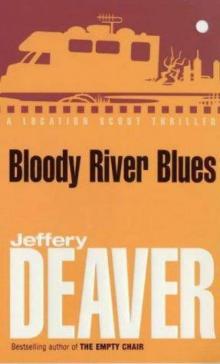 Bloody River Blues
Bloody River Blues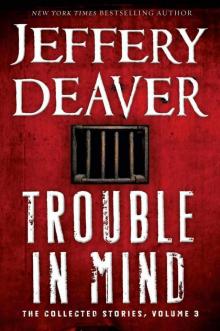 Trouble in Mind: The Collected Stories, Volume 3
Trouble in Mind: The Collected Stories, Volume 3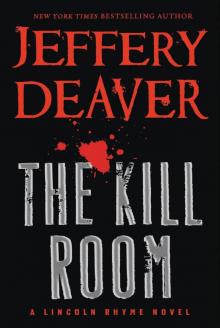 Lincoln Rhyme 10 - The Kill Room
Lincoln Rhyme 10 - The Kill Room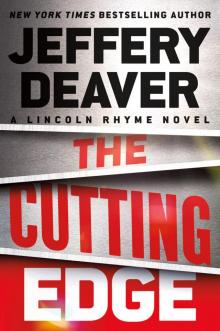 The Cutting Edge
The Cutting Edge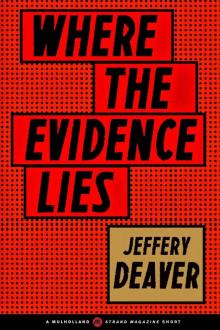 Where the Evidence Lies
Where the Evidence Lies Hell's Kitchen
Hell's Kitchen Twisted
Twisted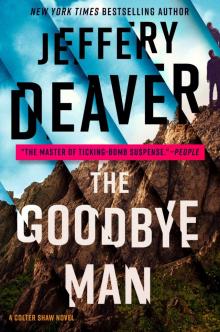 The Goodbye Man
The Goodbye Man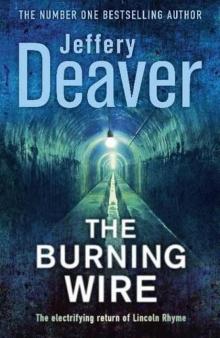 The burning wire lr-9
The burning wire lr-9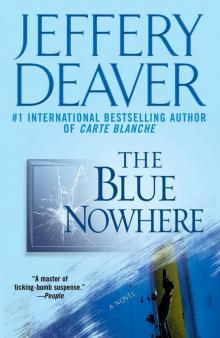 The Blue Nowhere: A Novel
The Blue Nowhere: A Novel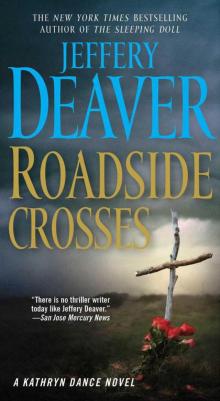 Roadside Crosses: A Kathryn Dance Novel
Roadside Crosses: A Kathryn Dance Novel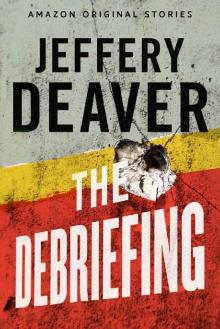 The Debriefing
The Debriefing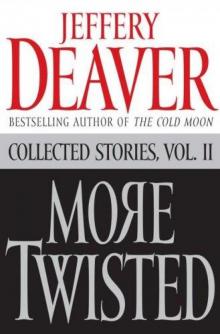 More Twisted: Collected Stories, Vol. II
More Twisted: Collected Stories, Vol. II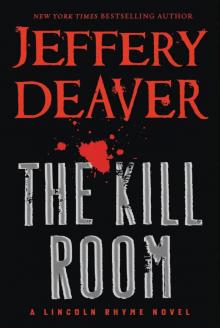 The Kill Room lr-10
The Kill Room lr-10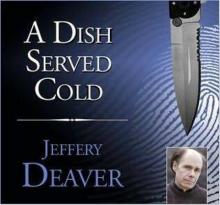 A Dish Served Cold
A Dish Served Cold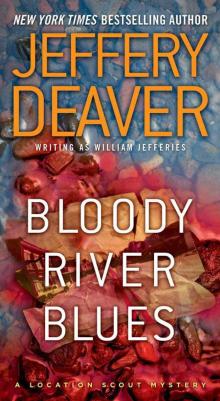 Bloody River Blues: A Location Scout Mystery
Bloody River Blues: A Location Scout Mystery The Bodies Left Behind: A Novel
The Bodies Left Behind: A Novel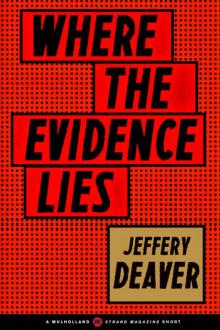 Where the Evidence Lies (A Mulholland / Strand Magazine Short)
Where the Evidence Lies (A Mulholland / Strand Magazine Short)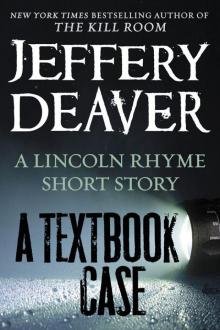 A Textbook Case (lincoln rhyme)
A Textbook Case (lincoln rhyme) Copycat
Copycat The Chopin Manuscript: A Serial Thriller
The Chopin Manuscript: A Serial Thriller Carte Blanche
Carte Blanche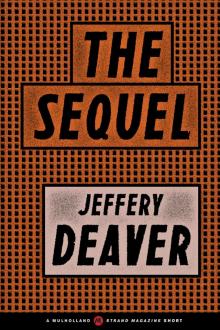 The Sequel
The Sequel